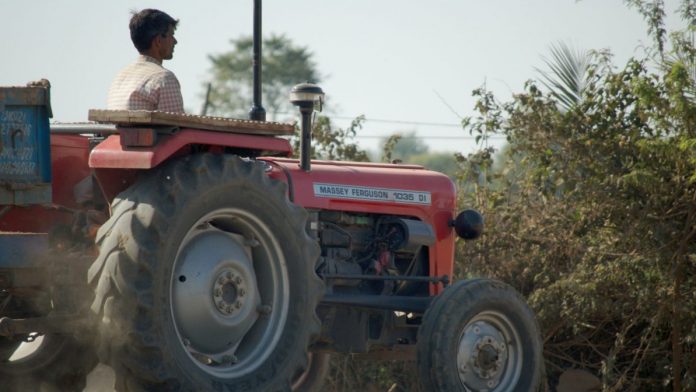NABARD presented a gift to the nation on August 16, 2018, when it released results of its NABARD All India Rural Financial Inclusion Survey (NAFIS). Among other things, the Survey estimates 2015-16 farmers’ income levels.

NAFIS combines strengths of NSSO’s Situation Assessment Survey (SAS) and RBI’s All India Debt and Investment Survey (AIDIS).
NABARD presented a gift to the nation on August 16, 2018, when it released results of its NABARD All India Rural Financial Inclusion Survey (NAFIS). Among other things, the Survey estimates 2015-16 farmers’ income levels. When in February, 2016, PM Modi presented his vision of doubling farmer incomes (DFI) by 2022-23, there was no assessment of the base (2015-16) aggregate income levels, and now, estimates from NAFIS fill that gap. NAFIS is based on a sample of 40,327 rural households in 29 states, of which 48% were agriculture households (agri-HHs) and 87% of them were small and marginal farmer households. NAFIS combines strengths of NSSO’s Situation Assessment Survey (SAS) and RBI’s All India Debt and Investment Survey (AIDIS).

If NAFIS followed NSSO definitions, the 2015-16 estimate of farmers’ income would have been somewhat lower, and so would have been its growth rate (below 3.7%). The survey also estimates income of non-agri rural HH at `7,269/month, more than half of which comes from working as wage labourers. The overall weighted average monthly income of a rural HH is found to be `8,059/. Regarding financial aspects of these rural agri-HHs, NAFIS found for the reference year that about 43.5% borrowed money with the average availed loan of `1,07,083. 60.4% of these HHs borrowed from institutional sources, 30.3% from non-institutional and 9.3% from both. Close to 56% of loans were for non-agri purposes. More than half (52.5%) of agri-HHs were found to be indebted with an average outstanding debt of `1,04,602 for the year. Almost 88% of all rural HHs had bank accounts, and their monthly consumption expenditure on food was 51% of total expenditure.
What does this data mean for the PM’s dream of doubling farmers’ income (DFI)? The Dalwai committee, set up in April 2016 to advise on a strategy towards DFI by 2022, did not have any benchmark income levels for 2015-16. So, the committee derived them by applying yearly growth rates of state-wise net-state-domestic-product (NSDP) to NSSO estimates of 2012-13 income levels. For 2015-16, the committee found that average Indian agri-HH earned about `8,059 per month. This estimate is lower than that of NAFIS, which is at `8,931. In any case, to see what happened between 2002-03 and 2015-16, we compared nominal and real income levels and estimate state-wise growth rates.
The attached figure gives real income levels (at 2015-16 prices) for three years (NSSO’s 2002-03 and 2012-13 and NAFIS’s 2015-16) and growth rates for major states and pan-India. Comparing incomes, we find that Punjab, with `23,133, tops the list while UP, with `6,668, is at the bottom, with the all India average at `8,931. In terms of CAGR, Odisha tops with 8.4%, though from a low base, while J&K with -2.3% is at the bottom, due to an abnormal drop in income in 2015-16. All-India CAGR in farmers’ real income is 3.7%, which is roughly the same as the agri-GDP CAGR (3.6%) during the same period. In terms of sources of incomes, NAFIS offers interesting insights, particularly for the Dalwai committee. NAFIS estimates that in 2015-16, 35% of farmers’ income came from cultivation, 8% from livestock, 50% from wages and salaries, and 7% from non-farm sectors.
The year 2015-16 was a second consecutive drought year (rainfall in 2014 was 12% below normal, while that in 2015 was 14% below normal), and comparing it with NSSO’s 2012-13 structure, we find that income share from cultivation and livestock fell from 60% in 2012-13 to 43% in 2015-16. It appears that working as labourers is a fall-back option for the average farmer in drought years. Besides, increasing pressure with shrinking average holding size (NAFIS estimates it at 1.1 ha) is presumably forcing farmers to work as labourers to meet their needs. This is very different from what the Dalwai committee assumes, that 69-80% of farmers’ incomes by 2022-23 will be coming from farming of crops and animals. Interestingly, all three surveys were done in years facing deficit rains: rainfall in 2002-03 was 19.2% below normal, in 2012-13 it was 7.1% below normal and in 2015-16 it was 14% below normal. Thus, one wonders whether these surveys capture the true picture of agriculture and farmers.
Going forward, it would be better if NSSO and NABARD ensure that their next surveys belong to normal rainfall years. To achieve PM Modi’s dream of DFI by 2022-23, the Dalwai committee points out that farmers’ real incomes need to grow at 10.4% per annum, i.e., 2.8 times the growth rate achieved historically (3.7%). This sounds like a challenge to raise the country’s GDP growth from 7.2% to 20%! Is this really feasible? Examining various govt. policies and programs launched in the last 3-4 years, especially their implementation, be it crop-insurance, focus on irrigation (99 projects), new MSP formula of 50% above A2+FL cost, etc., does not give confidence that the DFI dream can be achieved by 2022-23, or even by 2025. It can possibly be done by 2030, unless the govt. undertakes drastic steps to augment farmers’ incomes at a faster pace.
Gulati is Infosys chair professor for agriculture and Saini is senior consultant at ICRIER

About the author